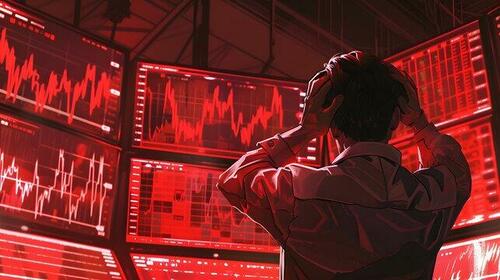Buy The Dip... Or Embrace The Rotation?
Authored by Louis-Vincent Gave via EvergreenGavekal.com,
Back in 2000, when technology stocks hit the wall, one of Gavekal’s first clients told us: “It’s OK. Bear markets serve an important purpose: they return capital to its rightful owners.”
Behind this cynicism lies an inherent truth.
Bear markets do tend to shake out “weak hands,” clean out retail investors, and punish those who operate with too much leverage. Another key function of bear markets is to transfer leadership from one country or sector or asset class to another.
This brings us to today’s single most important question: is the current shakedown in the Nasdaq, Nikkei, and US dollar an opportunity to buy more of these assets on the dip? Or is it now time for investors to look for new stories?
The answer to this all-important question might well be provided by the Federal Reserve. Unsurprisingly given the recent market action, the clamor for the Fed to cut interest rates is now as loud as a pair of Justin Trudeau’s socks. But what would a cut mean for asset prices?
Let’s start with the old Gavekal notion that assets have value (i) because they are rare, like gold, diamonds, vintage Ferraris and impressionist paintings, or (ii) because they are useful, i.e. because they generate cash flows. Bearing this distinction in mind, it becomes obvious that the bull market of recent years was primarily a bull market in “efficient” assets rather than a bull market in “scarce” assets. And few things are as efficient at generating cash flows as large-cap technology stocks. So, what has triggered the market meltdowns of recent days?
A shakedown of over-leveraged investors, who through cheap credit in yen leaned too far over their skis. If so, the Fed doesn’t really need to cut. All we are seeing is assets being transferred from weak to strong hands, or as our client would put it, “capital returning to its rightful owners.”
A reflection of an unfolding economic slowdown. If so, a Fed rate cut would make sense.
The sudden realization by investors that their expectations of future efficiency had departed massively from reality. In this case, a bear market in efficiency assets has now started.
Gavekal clients who have taken the time to read the reports I have put out over the last couple of months will know I have planted my flag firmly on the third explanation. The hype over artificial intelligence, and the consequent heady valuations of AI-related stocks, departed too far from any possible reality. Now we have started the adjustment phase.
The market environment has therefore changed. But would a Fed rate cut put Humpty Dumpty together again? It is unlikely.
Instead, a Fed rate cut, if and when it happens, will amplify a number of trends that are already starting to emerge.
1) The underperformance of the US dollar. One interesting feature of the current sell-off is that the US dollar has failed to catch a safety bid. Instead, Asian currencies (apart from the Indian rupee) have risen over the past couple of weeks. This is highly unusual. But it may not be that surprising. Over the last couple of years, China has been running trade surpluses on a scale the world has never seen before. Even so, we haven’t seen the US dollars that China has earned abroad flow home to push the renminbi and local asset prices higher. Instead, the entrepreneurs behind China’s trade surpluses have likely chosen to recycle their US dollar earnings into the one asset class that seemed absolutely fire-proof: large-cap US stocks. If these stocks are now rolling over, what will China’s trade surpluses be recycled into? What if they end up in high-yielding domestic assets? In such a world, the renminbi will benefit from powerful tailwinds, as there are no natural sellers of the Chinese currency.
2) The strength of precious metals. Gold has been very strong lately in spite of China’s economic weakness, the hawkishness of the Fed and the strength of the US dollar. If some or all of these variables now reverse, gold could really surge. This brings me back to the question I started with: if the Fed starts to cut rates meaningfully in the weeks to come, will we go back to the same Mag-7, US tech, US dollar bull market? Or will belief in US exceptionalism go out the window, and—as in the first decade of the century—will we get a bull market in commodities and emerging markets, the usual beneficiaries of a weak US dollar environment?
My belief is that a looser Fed will not reignite the bull market in efficiency shares.
That ship has now sailed.
In fact, big holders of the Mag-7 should be lobbying for the Fed to sit on its hands, because only with a structurally strong US dollar will Microsoft, Alphabet, Nvidia and the rest attract the foreign and domestic capital needed for these stocks to recapture their highs, and power on to higher heights.
By contrast, a looser Fed will help to confirm the transition away from efficiency shares to scarcity assets.




